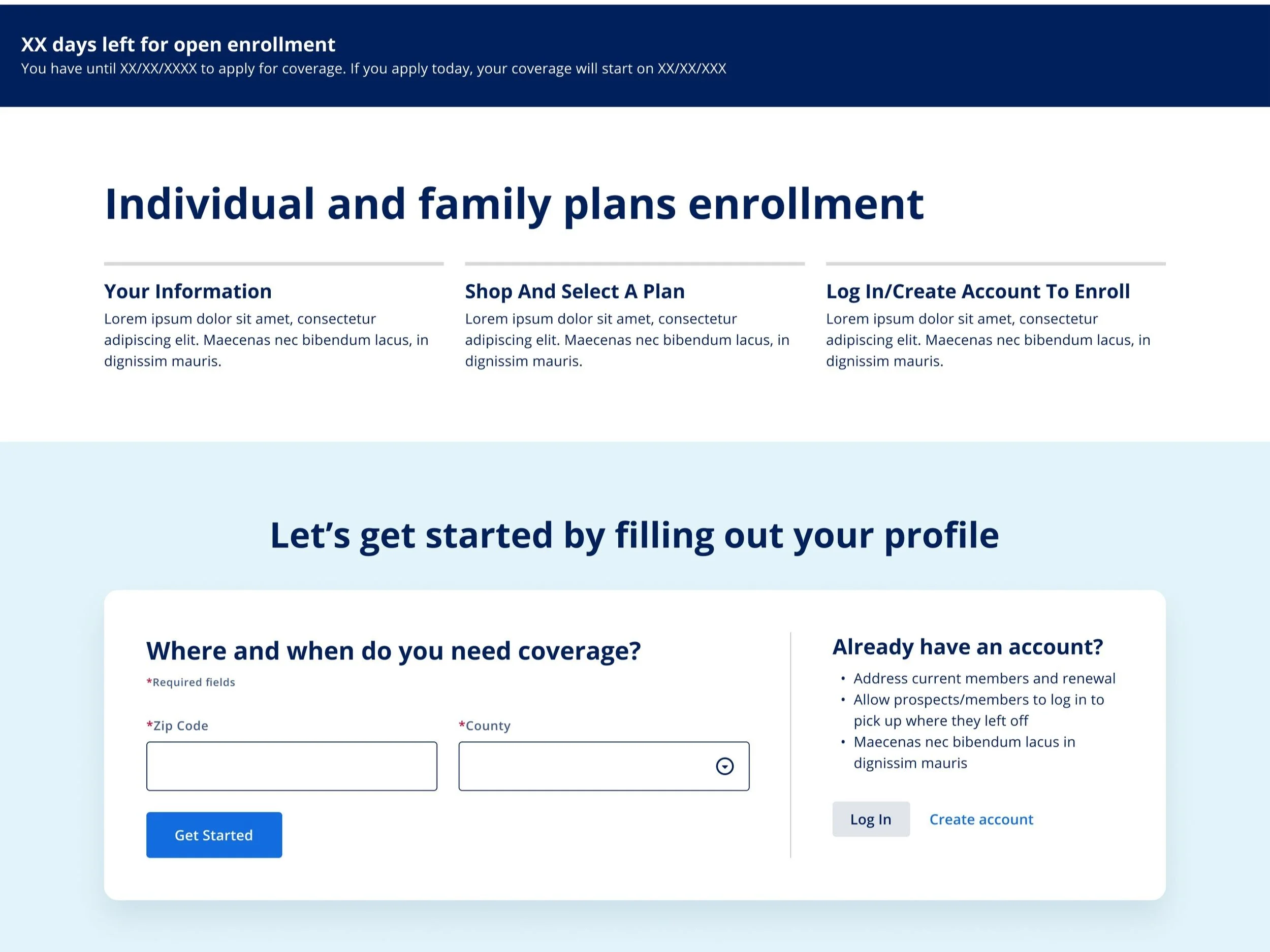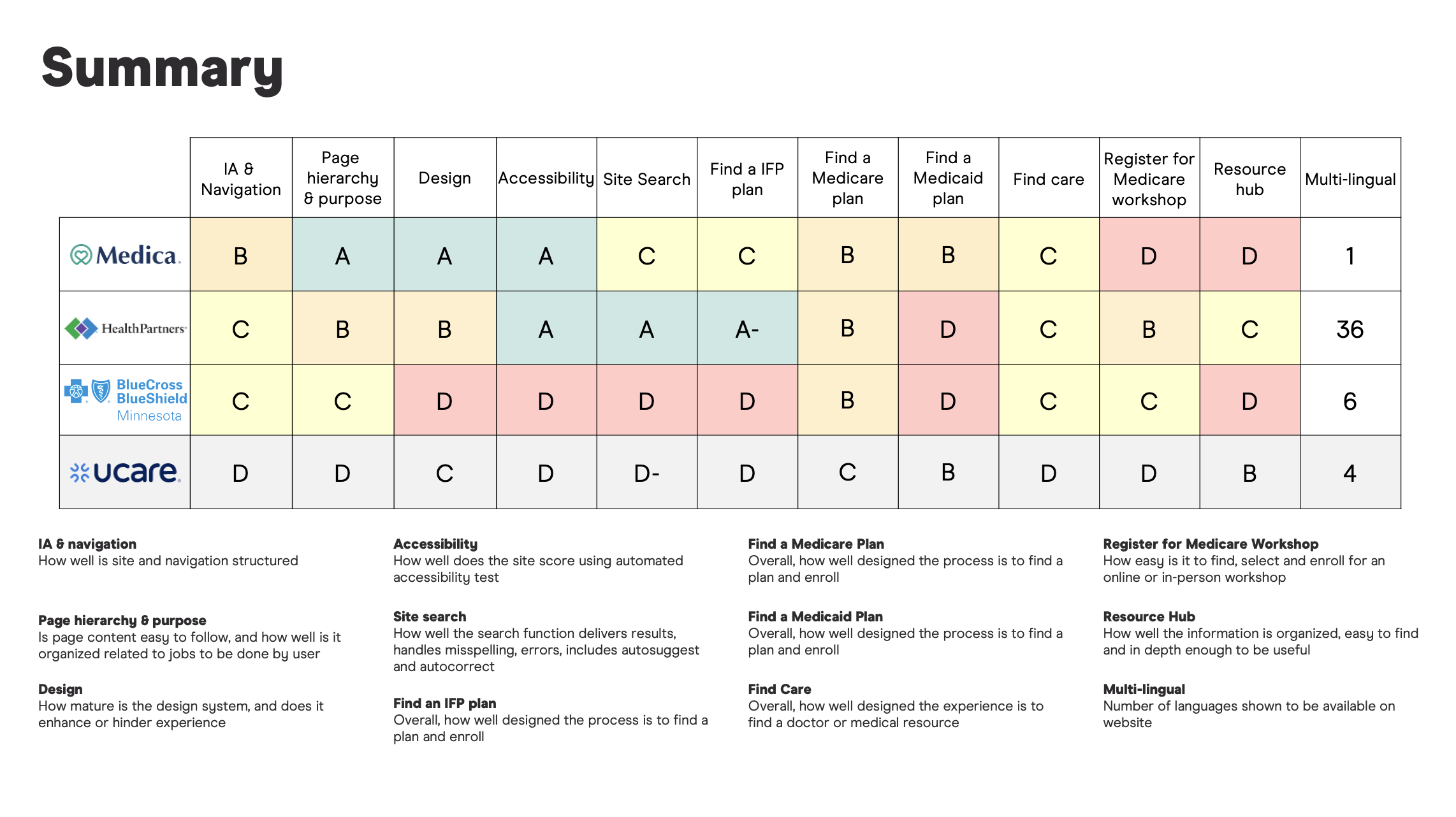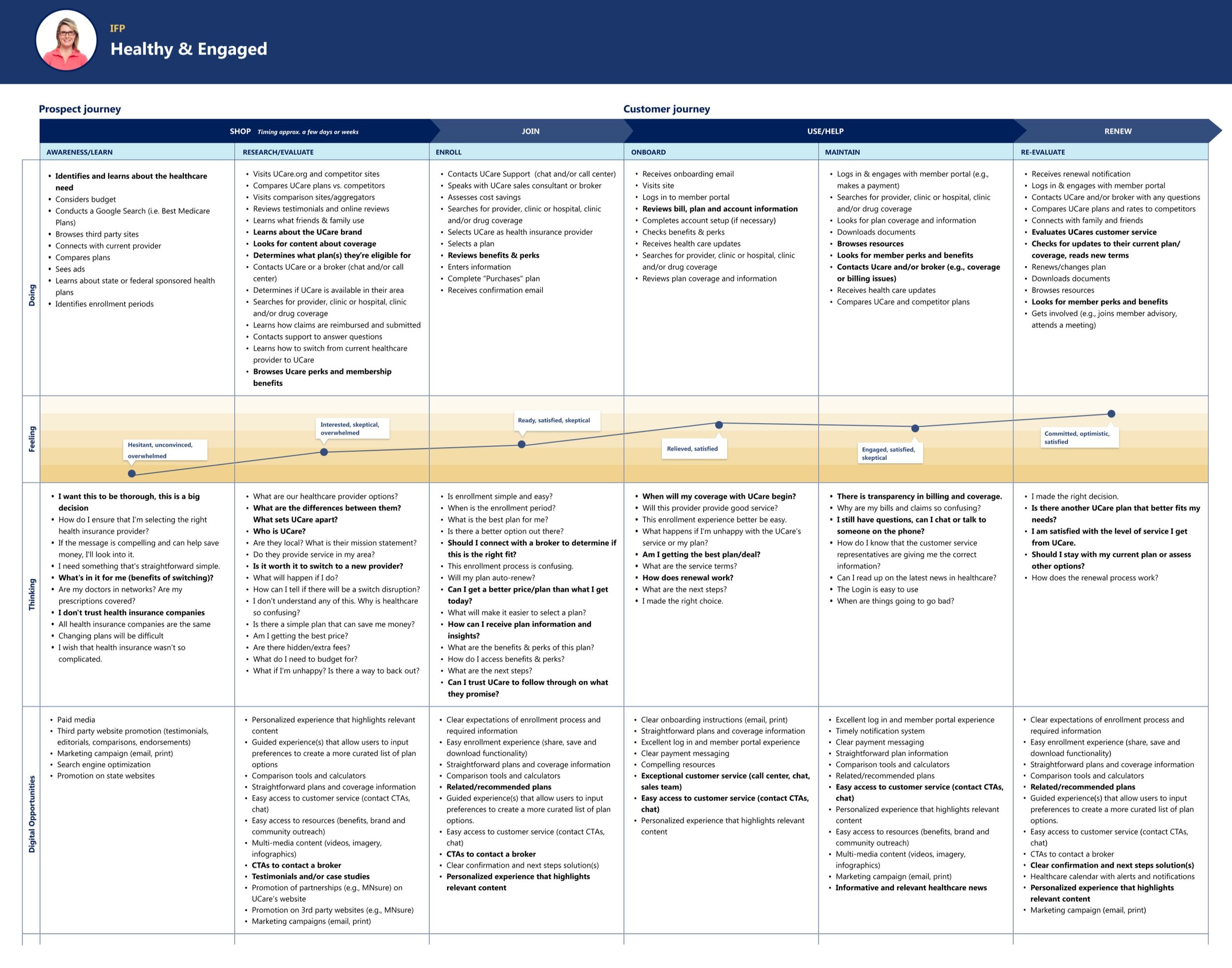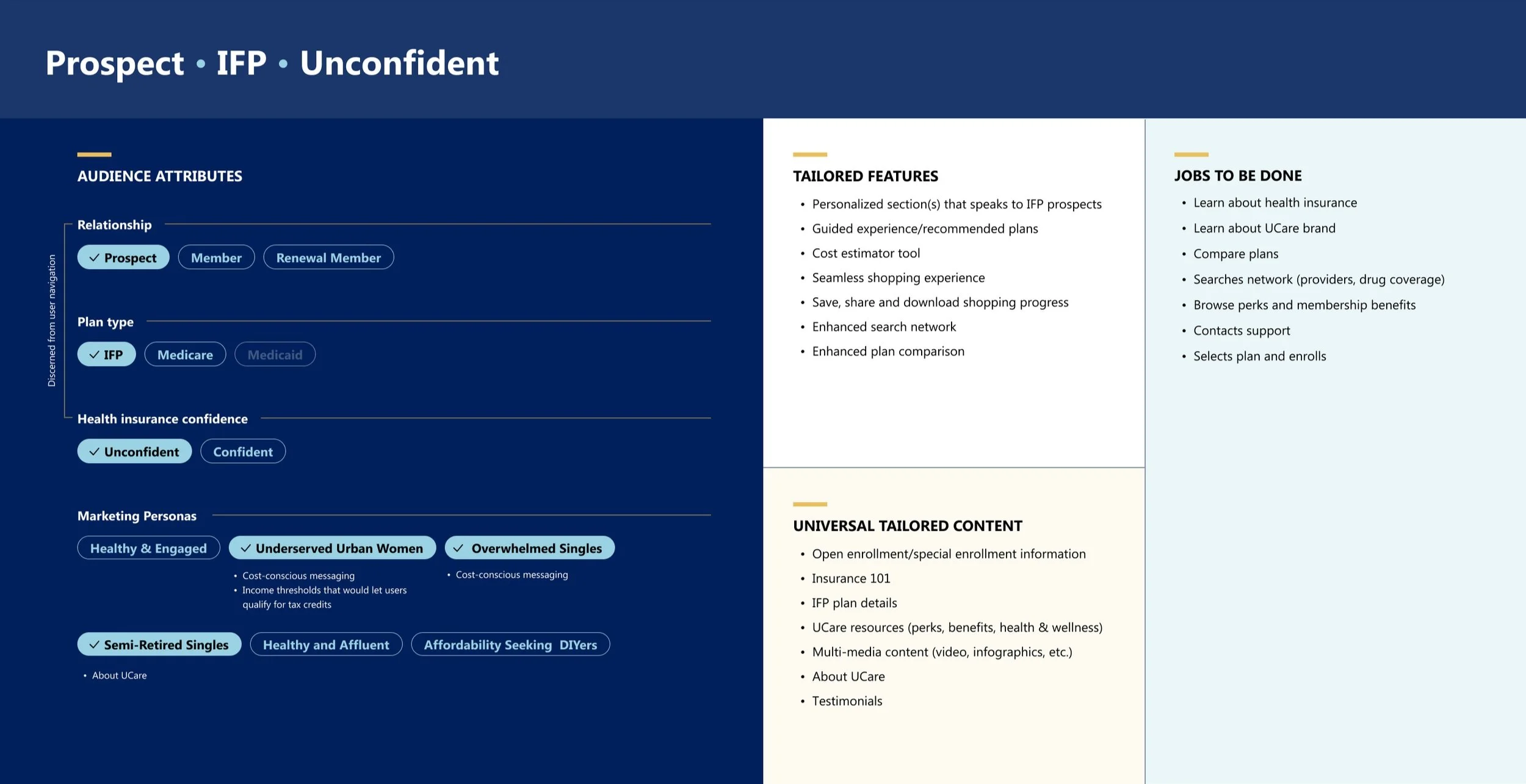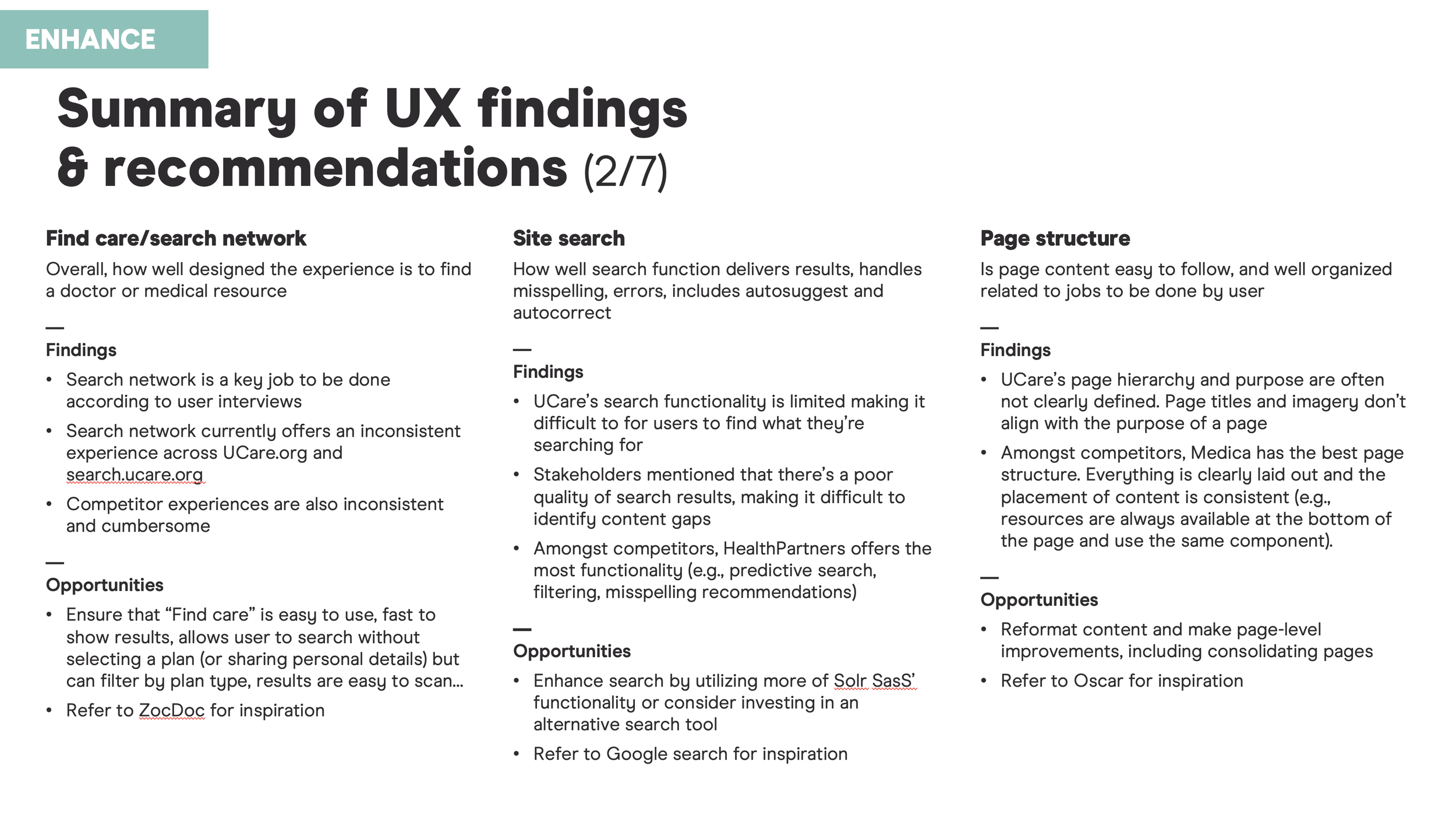UCare- Shopping Experience
What is UCare?
UCare is a non-profit health plan provider based in Minnesota, USA, that offers Medicare, Medicaid, and individual and family health plans. They focus on providing affordable and accessible healthcare to individuals and families.
The Problem?
UCare’s healthcare plan website does not feature an end-to-end e-commerce experience. The current website is hard for users to navigate, find relevant healthcare plan information, and pick a plan that fits their needs.
The Question: How can we Ensure that “people powered health plans” are delivered by people first experiences?
Tools: Zoom, Figma, InVision, Google suite, PowerPoint.
Deliverables:
Roles: UX Designer, Researcher and Test Moderator
Methods: User Interviews, UX Health Assessment, Competitive Audit, Personas, Journey Mapping, Behavioral Archetypes,
Research
Research Objectives
•Understand the existing pain points in the current experience.
•Discover how prospective members, members, brokers, and providers use the website.
•Prioritize features based on the needs of each individual audience.
•Gain a better understanding of how users search for information and purchase plans.
UX Health Assessment
To begin our research, A UX health assessment was performed to review the digital experience to understand the as-is situation. Using UX guiding principles (heuristics, accessibility, and known design patterns) challenges and potential opportunities for improvement were identified.
Competitive Analysis
Based on our UX health assessment, a competitive analysis was done to understand the structure, functionality, and key features of Ucare’s healthcare competitors. The goal of this analysis was to identify any value-adds, misses, innovations, and opportunities.
We subjectively graded each of the experiences by topic and grades were assigned using the following A to F scale:
A: Among the best
B: Better than average
C: Average
D: Worse than average
F: Falling behind
User Interviews
13 – 1 hour user interviews were conducted. Participants were recruited based on UCare’s marketing personas. The objective of these interviews was to understand participants’ experiences with their health insurance and their future goals and expectations.
Digital Personas & Journey Maps
Based on the 13 user interviews, seven of UCare’s marketing personas were adapted to account for digital goals, pain points, and opportunities. Journey maps were also created for each digital persona.
Key findings from this work included:
•All journeys followed the same six-step journey from awareness/learning to re-evaluate.
•The primary differences in journeys appeared at a plan type level (Medicare vs. IFP). Journeys for personas within a plan type did not result in significant differences.
•The primary differences in digital personas appeared at a plan type level (Medicare vs. IFP). Personas within a plan type did not result in significant differences. This led us to propose changing the way we look at users using behavioral archetypes.
Behavioral Archetypes
When examining the digital experience related to personas, we found that the user’s confidence level affects their behavior more than which persona they are. Based on this finding, we shifted our focus away from the personas and toward Behavioral Archetypes. Behavioral archetypes convey the “who does what, when they do it, and why” of the audience. They focus on a group's needs, motivations, and pain points and capture how they think, feel, and act in particular situations or scenarios.
Key findings from this work included:
Confident users are savvier and want to directly complete the job (task) they are trying to do.
Unconfident users want more assistance and information to help them decide what is the best choice for them. They use more educational materials or digital tools, customer support, brokers, or would want to attend a meeting.
This insight led us to develop a model for how to consider which features and content would need to be considered for their specific behavioral style. From there, personas could be considered for personalization.
So, we developed behavioral archetypes related to each stage, plan type, and confidence level.
UX Findings and Recommendations
Based on the UX Health Assessment, User Interviews, and the Competitive Audit, we have compiled a list of key features and content:


